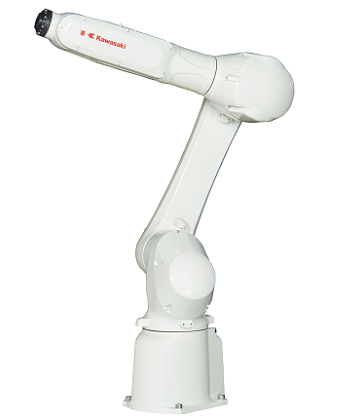
- IndustriesElectronics, Machinery & Metal Manufacturing
- ApplicationsMaterial Handling
- Robot SeriesRS series
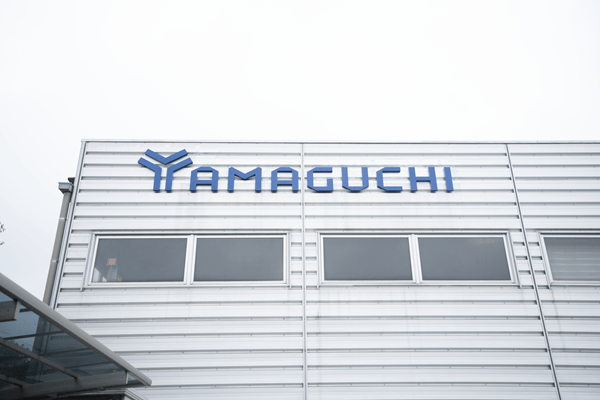
Yamaguchi Manufacturing introduces a ‘visual inspection robot system’ provided by Kawasaki Heavy Industries.
Yamaguchi Seisakusho, founded in 1950, is a precision parts manufacturer that will celebrate its 75th anniversary in 2025. The company was established as an independent company after the war, based on its grandfather’s experience working in a munitions factory. Focusing on research and development, the company introduced Japan’s first microformer and grew alongside post-war technological innovations, and in 1989 expanded into Dalian, China, becoming the fourth Japanese company to do so. Currently, the company focuses mainly on the resin business, and demand is expanding, particularly in the automotive industry. The company’s quality policy is “no back-end processes”, and it is thoroughly committed to quality at the manufacturing site.
As part of these efforts, the company introduced Kawasaki Heavy Industries’ Appearance Inspection Robot System in 2024. We asked the company about the background to the introduction of this system, which was the first time an arm-type robot was used, and its effects.
Increased sophistication of inspection and human resources required for the launch of new products
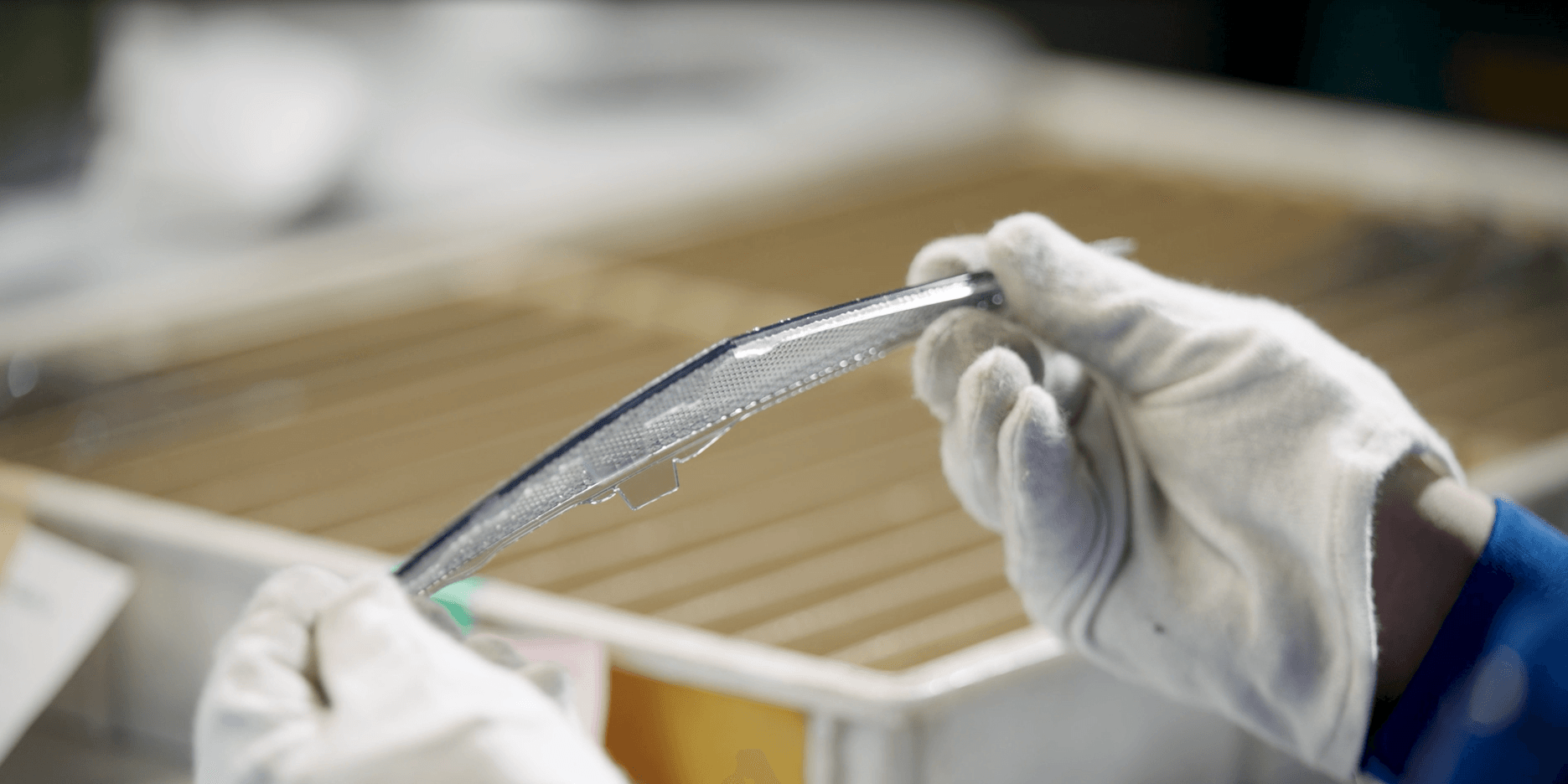
Automation of visual inspection was first considered for a new inner lens product that had gone into mass production. This product is a part used in the design section of the vehicle exterior, and unlike conventional parts that are hidden inside the vehicle, it requires a high level of appearance quality that does not tolerate minute foreign objects, scratches or deformation.
Yamaguchi Manufacturing had previously carried out visual inspections, but decided that, in addition to the complex curved shape of the new product, it would be difficult to secure inspectors with the necessary detection skills on a stable basis. ‘Inspectors were taking parts manually and checking the surface, back, sides and characters, but the inspection was complex and the process took more than 15 seconds per part. A lot of time was also needed to secure and train skilled personnel, and it was difficult to establish a stable inspection system in the face of a chronic shortage of human resources”, says Watanabe of the Technical Department 2.
Previous system and challenges
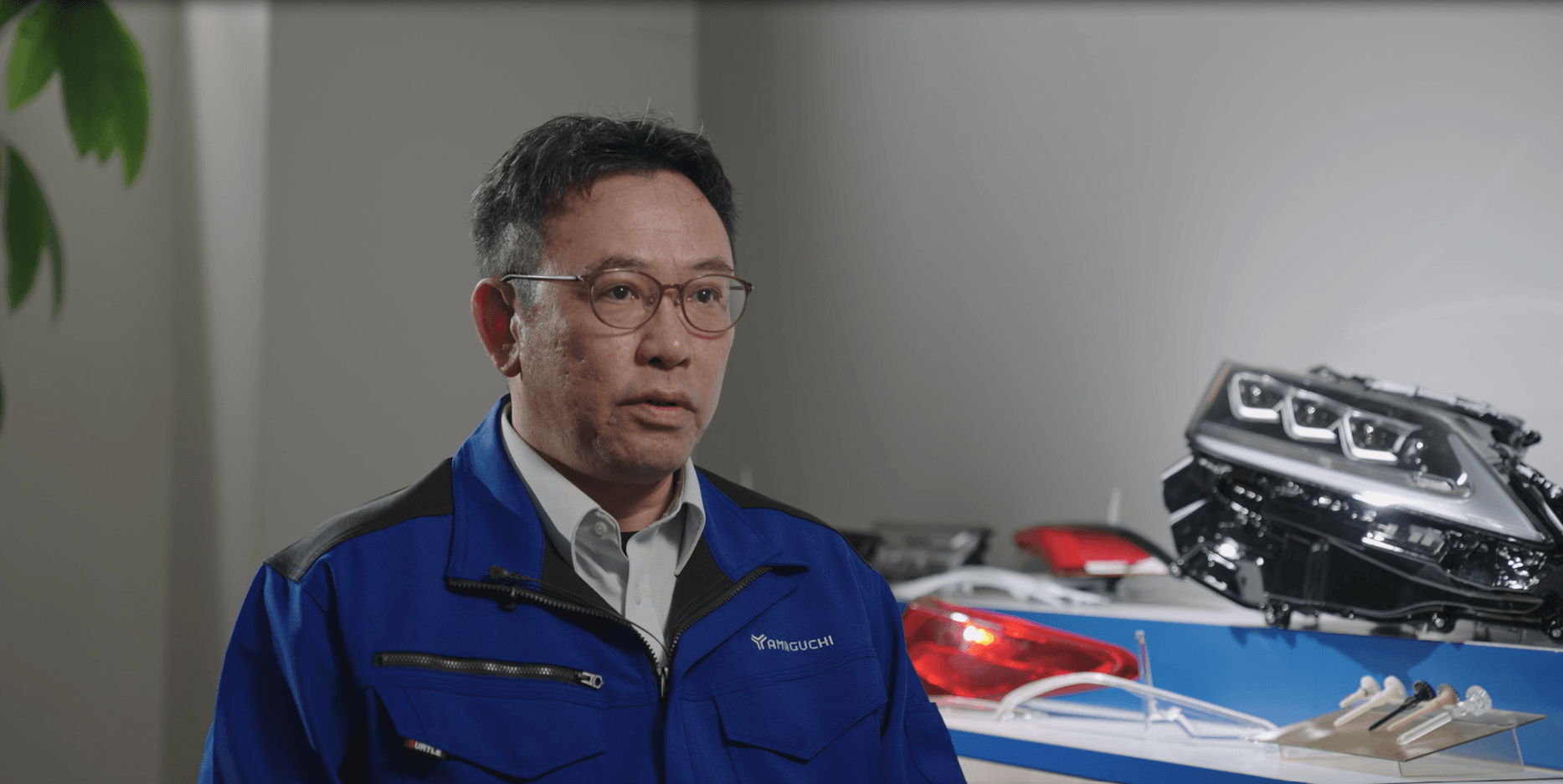
Before the introduction of the system, the manufacturing and technical departments were responsible for production, while the quality assurance department was responsible for visual inspections. However, the system did not allow for an immediate response, with feedback of fault information not being provided until the following day. The inspection process, which relies on the human eye, has also faced problems with inconsistencies in judgement and cycle time limitations.
In particular, the new product required four units to be inspected at one time within the cycle time, and if all inspection items were carried out manually, the time would not be sufficient. Mr Watanabe recalls, “The challenge was to draw a line between how much should be covered by automatic inspection and how much should be controlled by manufacturing technology, and to adjust the inspection standards.
Decisive factors in the introduction of the visual inspection robot system
One of the main reasons for introducing the robot system was the ‘high versatility of the handling’. The decision to use the robot was based on the expectation that the system would be able to handle a wide variety of products, as visual inspections could be continued simply by changing the settings, even if the product variety was changed in the future.
For the visual inspection robot system, we consulted a trading company after gathering information on the web and were introduced to Kawasaki Heavy Industries’ system. ‘For the inspection camera, we compared several companies, but for the robot, we did not make any comparisons because we decided that only a Kawasaki robot with a ‘high-speed pulse output function’ would meet our requirements, considering its compatibility with the line-scan camera.
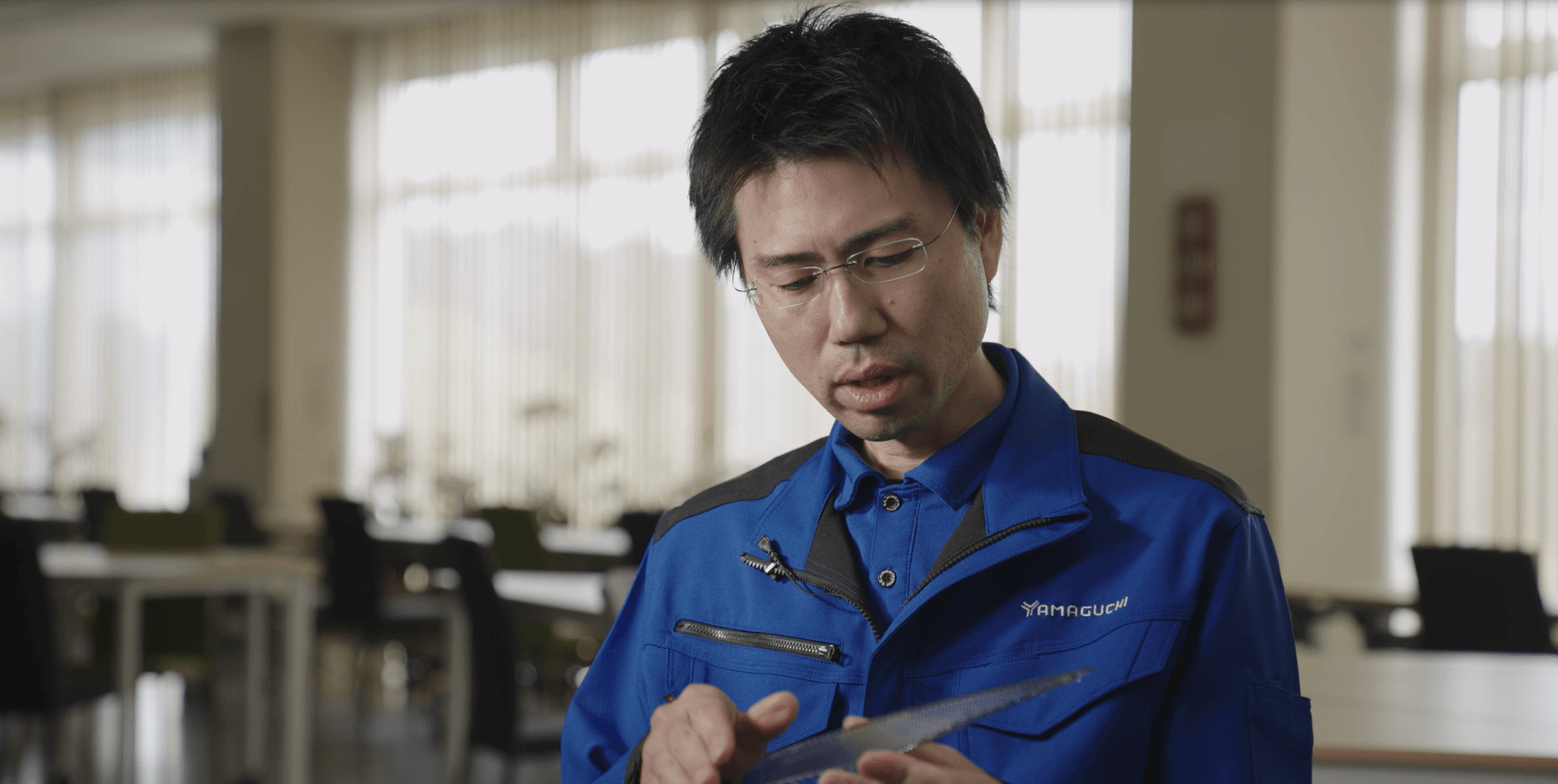
‘In selecting the product, the emphasis was on being able to complete the inspection within the moulding cycle while meeting the inspection criteria based on the customer’s drawings. The robot’s ability to perform complex movements at high speed was a deciding factor in our decision to introduce the system,” says Mr Nonaka, Quality Assurance Section 2, who was involved in the introduction of the robot system.
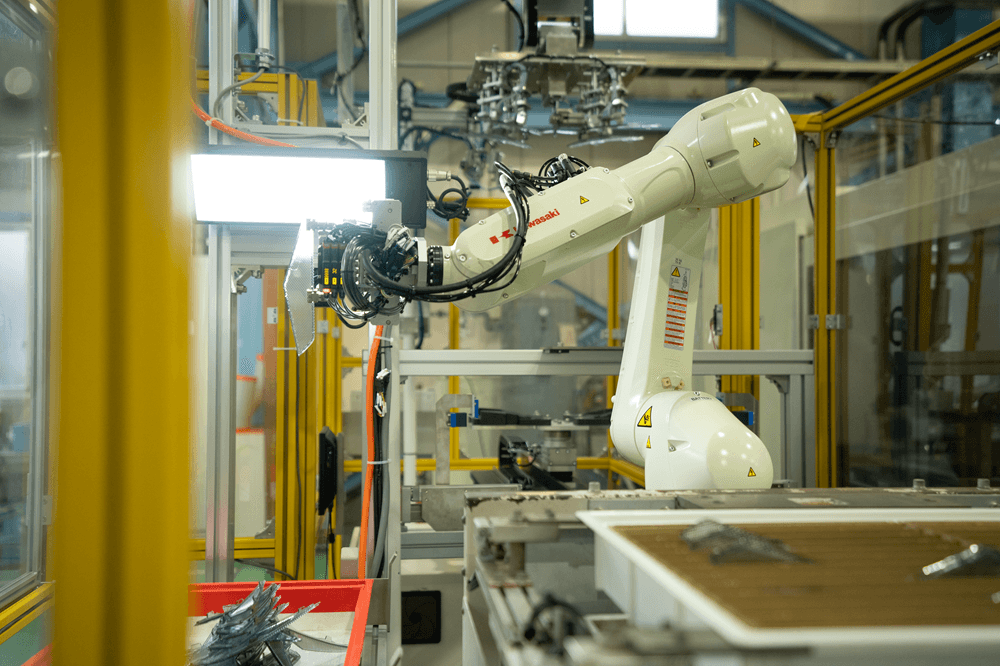
Response and structure at the time of introduction
Although there were no robot specialists within Yamaguchi Manufacturing when the system was introduced, it was handled mainly by *FA personnel in coordination with the SIer. As they are still not used to handling the robots, even now they do not touch them unnecessarily on site, and the FA staff are in charge of dealing with any problems.
In setting inspection standards, adjustments were made in the Kawasaki Heavy Industries laboratory and on site, and in order to process within the cycle time, settings were focused on important items rather than covering all items.
*FA: Factory Automation
Actual effects and feedback
Six months have passed since the introduction of the system and it is currently operated by a two-person team. KPIs include records of detection accuracy and the number of defects.
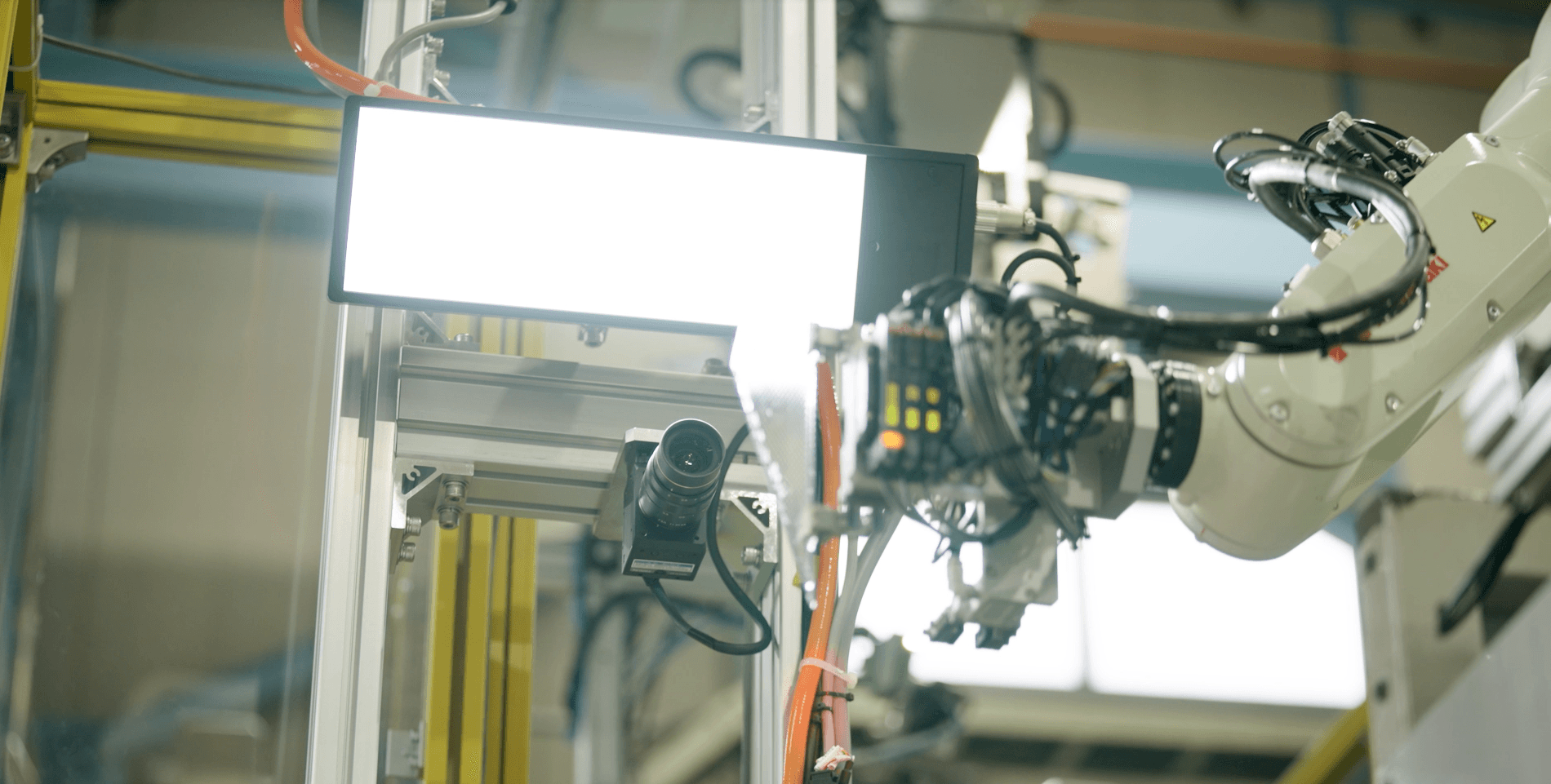
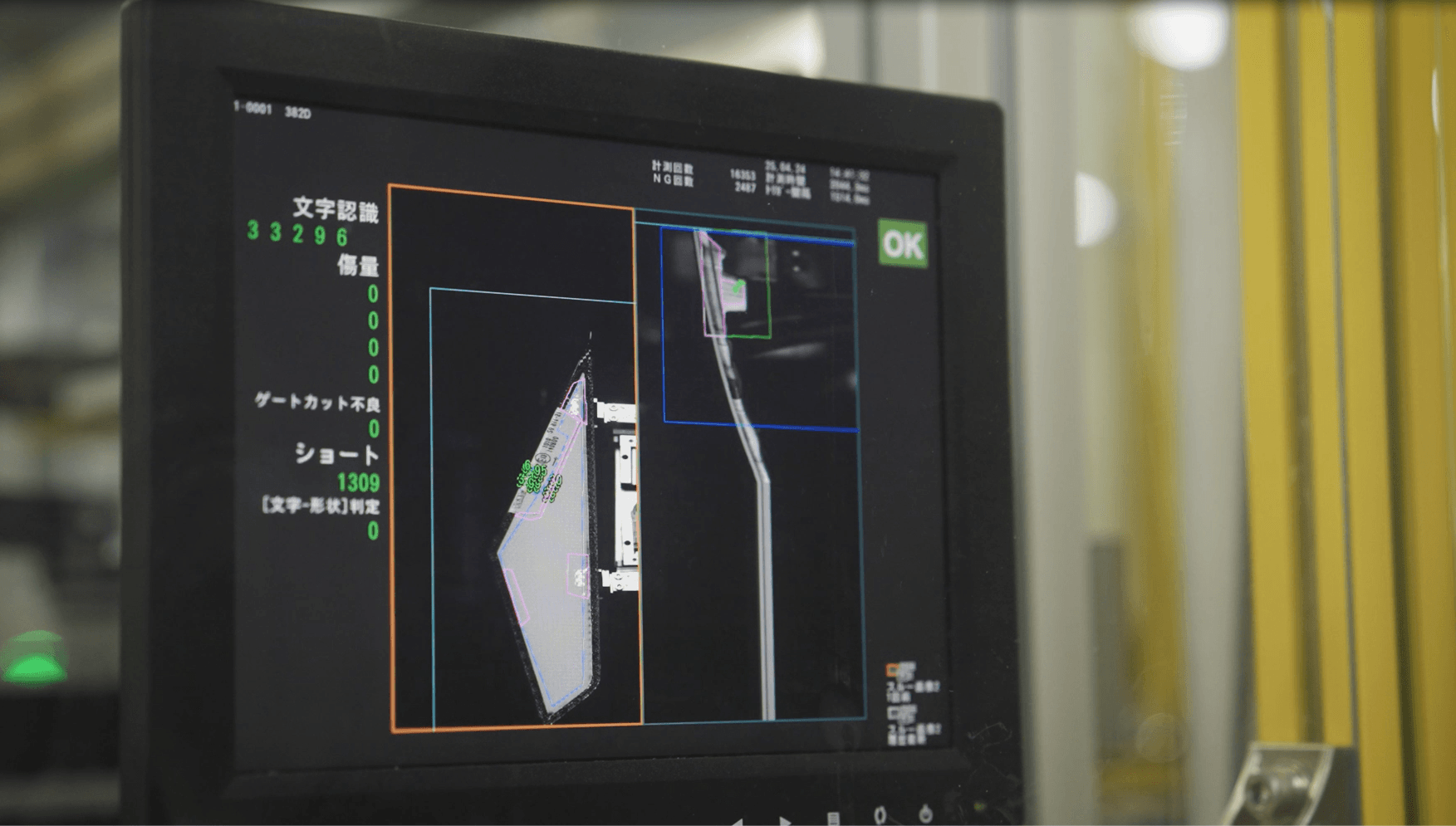
The introduction of the system has reduced labour costs for three inspectors (approx. 13 million yen per year). Feedback on defects, which previously took one to two days, can now be provided immediately, and defects can be detected immediately after moulding, enabling the line to be stopped and improvements to be made, which has also led to a reduction in production losses. The number of inspection man-hours has been reduced by 297 hours per month.
The high-speed pulse output function enables the visual inspection of curved products at high speed, a function that has been most appreciated since its introduction. The system also has the accuracy to detect dust and minute particles of debris that adhere due to static electricity, which was an unexpected result.
Future prospects and requests
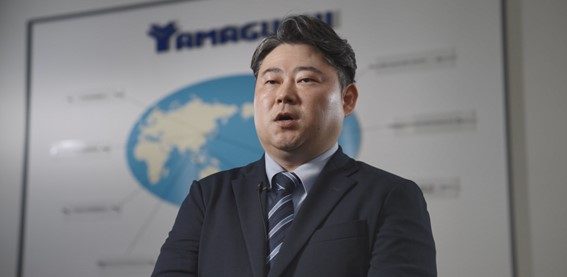
Mr Yamaguchi, Executive Vice President, says: “In the future, we would like to promote the introduction of automatic inspection, including at overseas sites.” In particular, we would like to build a system that can handle a wide variety of products in small lots with a single unit, and eventually configure the system to enable alternate inspections for multiple products.
As for requests to Kawasaki Heavy Industries, he expects the company to develop robots that can move more flexibly and general-purpose systems that can be installed simply, as the shapes of parts become even more complex in the future. The company also intends to develop an educational system so that on-site workers can participate in Kawasaki Heavy Industries’ robot school.
Robots play an important role in ‘fault detection’.
Yamaguchi Manufacturing regards this system as playing an important role in ‘fault detection in the inspection process’. If they were to introduce the system to other companies, they would recommend it because of the ‘high specifications, reliability and quality of service of Kawasaki robots’.
In the future, robot visual inspections will continue to be an important option for the company, as it is difficult to respond to products with strict quality requirements and to secure stable human resources.
